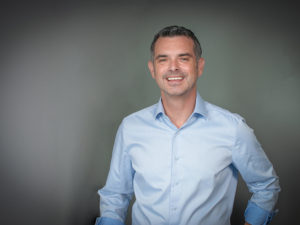
First off, thank you to all my regular column readers. I appreciate your time, attention and feedback. I often end my writing with a philosophical question for you and by inviting comments and questions, your thoughts stimulate my thinking on the ever-changing world of media. After the last column was published, U.S. citizen Rhonda R. reached out to me on Messenger:
“I’ve been having a Rethinking Media thought. With the Trumpian nightmare down here, the huge media issue – in the non-advertising world – is veracity, misinformation and disinformation. How should your readers be design-thinking those trust issues, the attendant responsibility on platforms and broadcasters, etc., surrounding them and an eventual reckoning with their audiences for the wrong steps?”
Excellent question. As an innovation practitioner applying design thinking to media, I would advise them to frame (articulate/define) and research the problem, then select and test solutions. Rhonda’s question is asking us to address the distribution of false information (deliberately or not) as a problem for media professionals responsible for the profitability of their organizations. So I’d forgo the public’s suspicion and disgruntlement about misinformation (information that is not factual, complete, peer-reviewed or observable) and disinformation (misinformation that is intentionally false and misleading) and frame the problem in a way that helps me design think its impact on my goal of sustaining and increasing the profitability of my organization. Here’s a brief example.
Define the problem specifically
How we define the problem impacts its solution. Try several attempts at articulations from various points of view (framing, in design thinking parlance), until you land on the one whose answers and solutions are most relevant to your work. The problem behind Rhonda’s question could be defined by media professionals in many ways, including these:
- How important to our audience is trust in our organization, and what programming decisions build or erode that trust?
- How do we locate misinformation or disinformation on our platform(s)?
- In what ways are broadcasters responsible when mis- or disinformation is communicated through our platforms?
- Is there a correlation between the trust consumers have of content on our platform(s) and their interest in our advertisers? If so, to what extent, and is the correlation direct or inverse?
- Does the presence of mis- and disinformation on our platform(s) affect our relationships with advertisers and consumers, and if so, in what ways?
- What guidance, if any, do current ethical, regulatory and legal standards offer us regarding mis- and disinformation? (Are new standards likely to emerge from our fields’ overarching organizations and/or government regarding mis- and disinformation, and what might they look like?)
 There are plenty more ways you could define the problem. See how each articulation highlights a different aspect of the issue? By structuring the problem differently, each articulation calls for different research and analysis, and will produce a different set of solutions. Take a moment now, if this issue is relevant to your organization, to frame the problem in a way that’s most helpful for you.
There are plenty more ways you could define the problem. See how each articulation highlights a different aspect of the issue? By structuring the problem differently, each articulation calls for different research and analysis, and will produce a different set of solutions. Take a moment now, if this issue is relevant to your organization, to frame the problem in a way that’s most helpful for you.
For the sake of the diversity among readers’ organizations, I will define the problem partially, in a way that most other framing will rely on: In a world where shock and opinion drive audiences, how can we media professionals become aware of mis- and disinformation on our platforms and measure its impact on our bottom line (both revenue and brand)?
Review and diagnose
In my last article, I described the structure of social systems as per Niklas Luhman. As I wrote, communication is the tie that binds individuals within such a social system. Each system is connected to other social systems as well as other types of systems (machines, organisms and psychic). Launching from this theory, I would review the elements of each system (actor, author, show, device, website, etc…) in the broadcast ecosystem and assess its propensity to distribute false or biased information.
For example, many critics of social media would like the platforms – Facebook, Twitter and the like – to take full responsibility for information and source verification. Yet, to focus solely on a mechanical system (the social media platform) is myopic. Angry that teens were able to use TikTok to decimate attendance at his rally (a social system), Trump attempted to shut down the platform in the United States. But were he to succeed, the same, or similarly clever, social system would find another mechanical system from which to launch its pranks.
The avenues of investigation can be manifold. By considering the issue from many angles, innovators can find and focus on the problem definition/diagnosis that precisely fits their situation. During my stint as a Web Producer at Workopolis in the early thousands, my supervisor showed me that numbers give the illusion of precision yet can be as broadly interpreted as abstract art. Numbers may be factual, but how they were gathered – how was the problem defined – and interpreted is influenced by the researchers’ and analysts’ knowledge, education, experience, emotional-state, desires and biases.
Inherent bias
 Biases are mental preferences often unquestioned and often unconscious. We all have them. They allow us to assess and react to situations quickly by using categories and cues as shortcuts to direct thoughts and behaviours. They can include positive or negative impressions regarding a person’s height, weight, physical features, friends, behaviour, and the neighbourhood in which they reside. Stereotypes and their ugly cousins, racism, anti-Semitism, homophobia, etc., are born of those shortcuts. One good way to uncover one’s own biases is to develop a mindfulness practice. By becoming aware of your thoughts as they come and go, you can learn to discern between those that are beneficial and those that are detrimental to you and those around you.
Biases are mental preferences often unquestioned and often unconscious. We all have them. They allow us to assess and react to situations quickly by using categories and cues as shortcuts to direct thoughts and behaviours. They can include positive or negative impressions regarding a person’s height, weight, physical features, friends, behaviour, and the neighbourhood in which they reside. Stereotypes and their ugly cousins, racism, anti-Semitism, homophobia, etc., are born of those shortcuts. One good way to uncover one’s own biases is to develop a mindfulness practice. By becoming aware of your thoughts as they come and go, you can learn to discern between those that are beneficial and those that are detrimental to you and those around you.
Not for you? Then use research to uncover your biases. The Harvard website offers Implicit Association Tests. Here you can take demo tests that will uncover how you feel about weight (fat vs thin), age (young vs old), sexuality (gay vs straight), race (black vs white), skin-tone (light vs dark), gender and countries (Canada vs the United States). Try both methods – you may be shocked at what you find. Then remember this premise of mindfulness: we are not our thoughts; thoughts change and can be changed. With intent, we can re-evaluate and change their thoughts.
Recently, I bore witness to a spectacle for the ages, the first 2020 American presidential debate. (I won’t share my insights here because revealing to you my political biases is not the purpose of this article.) The next day, I felt validated when my thoughts were echoed by news commentators and social media posts. I felt challenged when views differed from mine and shocked when some people presented 180 degree opposite views: Did these people watch the same debate I did? Are we living in separate universes? Surely, these dissenters from my (correct) views are mistaken, gullible and possibly ill-willed.
Sound familiar?
Design Thinking requires its practitioners to be empathic – to see the world from their subject’s perspective. This includes an honest review of their biases, even when they conflict with yours. Social media posts and comments as well as news commentary are great sources for identifying various social perspectives, viewpoints, and both implicit and explicit biases.
To be clear, I’m not prescribing the adoption of biases, but rather, the study of biases in order to properly diagnose a problem.
Like attracts like. Netflix’ new documentary The Social Dilemma dives into the idea of echo chambers. For the most part, people seek validation on social media more than information. They look for those people who share their views and values. The aggregation and the communication between these actors in a social medium become our audiences. Once we understand the biases and values of our audience, we can ensure growth as well as repeat visits and views by appealing to them and helping them feel connected to others and feel good about themselves.
 Setting morality, ethics and alignment with our stated missions to the side for a moment, broadcasters, publishers and stakeholders in the media industry must assess the impact on the bottom lines of various types of information distributed on our platforms. Stopping there, though, would be myopic. We also owe it to our organizations, and the systems in which they function, to question the short- and long-term effects of distributing those types of content on our brand, our organization, our audience and to the broadest context for our markets, society as a whole.
Setting morality, ethics and alignment with our stated missions to the side for a moment, broadcasters, publishers and stakeholders in the media industry must assess the impact on the bottom lines of various types of information distributed on our platforms. Stopping there, though, would be myopic. We also owe it to our organizations, and the systems in which they function, to question the short- and long-term effects of distributing those types of content on our brand, our organization, our audience and to the broadest context for our markets, society as a whole.
Back to Strategic Foresight
In a column this spring, I introduced the use of Strategic Foresight, the ability to plan for the future by studying existing behaviour and estimating, assessing and projecting its impact moving forward incrementally. It is a proven academic discipline that helps organizations make sense of the world, currently and in the future, when things are unclear.
Part of a Strategic Foresight exercise involves the creation of a trend deck (a collection of trends).
The study of trends (behaviours repeated over time) forces us to take a moment, observe the world around us and its impact on our day-to-day operations. Once a full analysis is completed, the deck uncovers alternative futures growing from the present moment. This gives an organization, or an industry association, etc., the opportunity to align itself toward a desired future. Strategic Foresight is not dreaming and does not replace emphasis on meeting quarterly and annual objectives. Quite the opposite. Developing and studying a trend deck results in practical guidance for honing short-term objectives so that they lead to achieving longer-term goals.
The decisions we make today shape our future. What if content on your platforms that stimulates excitement and views today is likely to negatively affect your bottom line when you take a longer view? Wouldn’t you want to know that now? A structured trend analysis would allow your organization to properly frame existing and future problems, choose the future it wants to bring about, and unify organizational efforts toward reasoned, realistic and ambitious goals.
I’m curious. Who in your organization observes, shares and measures the impact of salient trends? Does the content you distribute mirror your corporate mission? Who is responsible for the distribution, interpretation and adoption of information on your platform(s)?
I’d love to hear your reaction to any or all of the questions explored in this article. Reach out to me at eblais@statsradio.com.



